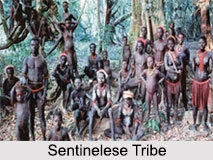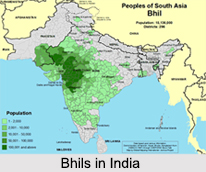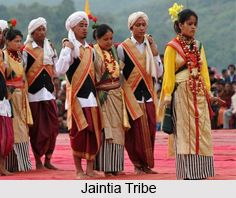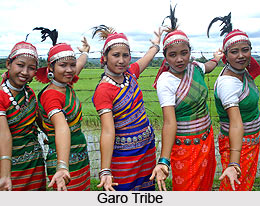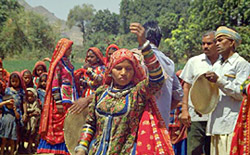Birhor tribe of Jharkhand originally belongs to the Mundani group. Birhor tribe is also identified as Mankidi, Mankria or Mankar-khia Kol because of their practice of ingesting and sharing monkeys. Birhor tribal community is reckoned as one of the most primordial and fading tribes of Jharkhand. The tribal people are semi-nomadic or nomadic people. The word Birhor etymologically signifies the `dweller of jungle`. The name of this tribal group has been derived from two words namely `bir` which stands for jungle and also `hor`, which signifies man. The Birhor tribes are part of Austro-Asiatic group and Tanda is the name of the group which they form to live together in their society. These tribal people speak Birhor language belonging to the Munda group of languages.
Location of Birhor Tribe
Birhor tribes are mostly concentrated around Hazaribagh district, Ranchi district and Singhbhum district. Previously, they were broken down into several smaller units in the entire region. Birhor tribes are also found in the states of Orissa, Chhattisgarh and West Bengal.
Origin of Birhor Tribe
Birhor tribe is one of the primitive tribes. They belong to the Proto-Australoid stock; linguistically, they originate from the Austro-Asiatic group. The people of this tribal community are thought to be the descendants of the Sun. Moreover, Birhor tribe has a close affinity with the Kharwar tribe. The social stratum of the Birhor tribe includes two groups namely Uthalu Birhor and Jaghis Birhor. Among these sub tribal groups, the Jaghis Birhors are nomadic people and both of the sub tribes have agrarian socio economic structure.
Culture of Birhor Tribe
No society is embellished without the culture and religious practices. Birhor society is not an exception. Their culture is rich and diverse. They follow Hinduism and have their indigenous traditional beliefs. `Sing Bonga`, is regarded by the people as the supreme god. He is very powerful and also the originator of all things on this earth. The people worship him once a year generally in the Bengali months of Poush - Magha (January - February). Chandu Bonga is also worshipped in the months of Poush and Magha. Birhor tribes also worship female goddess, Dharti Mai, who is believed to be supervising almost all the natural assets and also the living beings of the Earth. Apart from deities, the Birhor tribes also have faith on sprits. In fact, the Birhor tribes distinguish two classes of ancestral spirits - Hapram and Churgin. The Hapram are classified into Bura Burhi and Chowrasi. The Burha and Burhi are the spirits of the near ancestors whose names are remembered by the people, while the Chowrasi Hapram refers to those ancestors whose names are not remembered.
Society of Birhor Tribe
What is also unique about this Birhor society is how the whole society has been structured. No clan lineage exists in the Birhor tribal community. Broadly, there are two groups that can be found. These are namely, orha (household) and tanda or tola (band). Orha constitutes their vital production and consumption component, and centres round the nuclear family of husband, wife and unmarried children. Maximum of them, however, include fractional or broken families, thus showing quite a flexible constitution. On the other hand, there is hardly any central authority for regulating band-formations amongst the Birhor tribes. Also these bands do not cling to any one of the territories. A remarkable feature of these Birhor tribes is that they segregate the whole of the patrilineal clans and lineages into little operating groups and at the same time line up themselves in such a manner so as to retain a successful balance of society and to handle with the feasible scarcity of marriageable spouses. Monogamy is supported in their society but sometimes they also allow polygamy.
Occupation of Birhor Tribe
Most of the Birhor people are agrarian but some earn their livelihood as labourers and from forest resources. As per the records of the anthropologists of Indian subcontinent, these Birhor tribes have taken up the professions of hunting. The reason behind this occupation is that Birhor tribes have got easy accessibility to the forest areas. The forest resources for the most part gathered by them are from the bauhinia creeper that grows copiously in these regions. Numerous kinds of ropes and rope-products are made from the barks (chhakkam) of these creepers. Various minor forest products are also procured and exchanged in the neighbouring society. However hinting fetes are performed only occasionally and the animals hunted are first and foremost used for eating. Although hunting contributes, how little it might be, to the whole of Birhor economy, this hunting fete becomes a cultural exuberance.
Birhor tribe have retained their indigenous way of living and customs.

















